ARTICLE AD
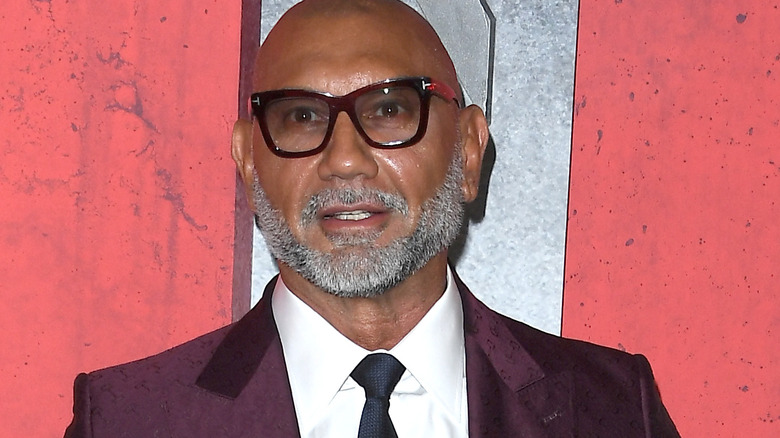 



Steve Granitz/Getty Images
Despite what leading scientists would have you believe, it's money that makes the world go 'round, and like a lot of athletes, professional wrestlers have a reputation for poor finance management. It's not all their fault — even though a company like WWE probably has enough money to buy several small countries, to this day many wrestlers still have to book their own hotels, hire their own rental cars, and keep themselves fed, and that's without considering other personal expenses like paying off a mortgage or putting kids through school. That said, many wrestlers will tell you that being careful with money is their own responsibility, and with nothing whatsoever in the way of organized labor protections, it's no surprise that many wrestlers also have stories about their struggles, like when WWE's Damian Priest opened up about being homeless or John Cena recalled sleeping in his car.
Advertisement
These days, wrestlers across the world are earning more money than some people will see in their entire lives, but achieving such financial success is one thing; it's another to maintain it. Over the years, the industry has seen many high-level performers go from a life of luxury to having little to nothing to their names, their initial stardom contrasting with their eventual poverty. Here are some of the most famous wrestlers who reached something resembling the promised land, but who surprisingly ended up hitting rock bottom.

Lex Luger

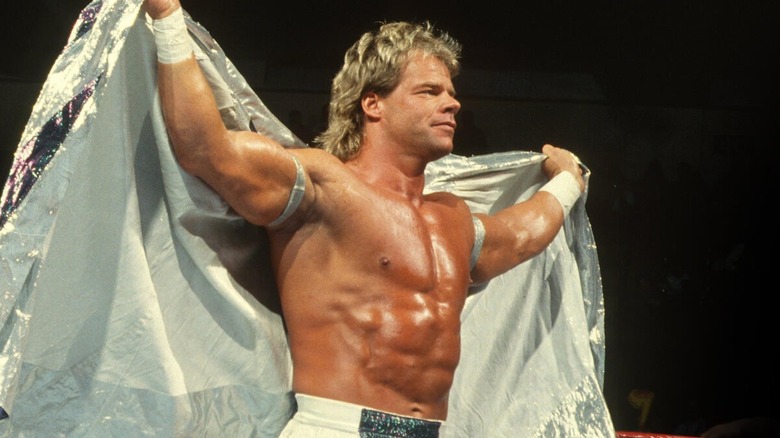 



WWE
In 1993, Lex Luger was given the unenviable task of trying to fill boots of Hulk Hogan, who had recently departed for WCW. Luger was transformed into an all-American hero who had his own bus, bodyslammed Yokozuna on an aircraft carrier, and was poised to be WWE's next top guy — partly on the basis that he looked like someone who could grate cheese on his own abdomen.
Advertisement
But Luger's life after his time in the ring was not kind to him, and his finances took several major hits. The spring of 2003 saw Luger get arrested multiple times for a variety of charges. At the time, Luger was living with his girlfriend and fellow wrestling legend Miss Elizabeth; in April 2003 Luger was charged a misdemeanor count of battery, but was able to post the $2,500 to make bail. After an arrest for driving under the influence, Elizabeth tragically passed away on May 1 from a drug overdose. Luger was arrested once more, and faced 13 felony counts of drug possession, as it looked as if Luger could have been the cause of Elizabeth's death.
Luger spent the following years spending almost every penny he had attempting to clear his name, and Elizabeth's death was eventually ruled as an accidental overdose, but the former "Narcissist" had been rinsed financially, and it only get worse for him. Since 2007, nearly all of Luger's money has been spent on healthcare as he was temporarily paralyzed after suffering a nerve impingement in his neck. At times, his health seemed to be improving, but since 2021, Luger has been confined to a wheelchair. However, he still makes appearances at conventions, and Luger was even in attendance for Sting's retirement match at AEW Revolution in March.
Advertisement

Virgil

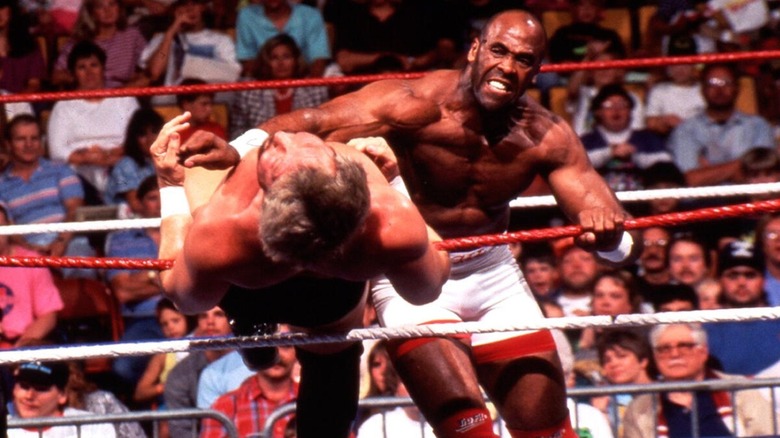 



WWE
The late great Michael "Virgil" Jones was a man so dedicated to the business that when he passed away in February 2024, he had everyone fooled as people reported that he died at the age of 61, when in reality he was actually 72 years old. This dedication to the wrestling business would end up costing Virgil dearly after his in-ring career finished, to the point where Ted DiBiase's former right-hand man became something of a laughing stock to the internet wrestling community.
Advertisement
Like most wrestling legends, Virgil would appear at conventions and meet-and-greet events to sign autographs for fans, but a common thread throughout these events was that no one would go to Virgil's table. Pictures and videos began circulating online of Virgil setting up a table for himself almost anywhere he could find a space, whether that was at conventions next to tables that had a lot longer lines than his, flea markets, and in some pictures, it genuinely looks like he's stopped off on the side of a highway in the hopes that the next person to break down was a fan of the Million Dollar Championship.
Virgil's financial situation became so dire that in 2023, he set up a GoFundMe where people could donate money in order for him to buy clothes and toiletries. At this point in his life, Virgil had already been diagnosed with dementia, colon cancer, and suffered two strokes, but was still willing to send anyone who donated money to him an autographed picture of himself. When he died, he didn't have life insurance and his family set up another GoFundMe in the hopes of covering the funeral expenses. In the end, the wrestling world came together and raised over $16,000 to give Virgil the send off he deserved.
Advertisement

Marty Jannetty

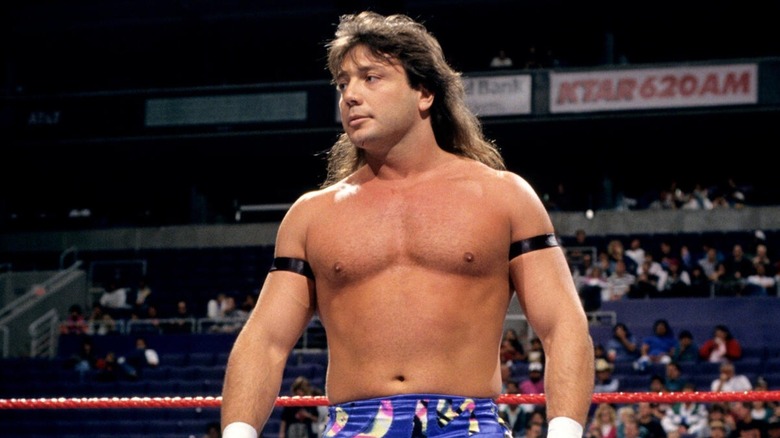 



WWE
These days, when a tag team breaks up, one person is often called the 'Michaels,' while the other is called the 'Jannetty,' and by the sheer fact of having a second name that is now commonly used by wrestling insiders as a derogatory term should give you a sense of how rough life has been for Marty Jannetty.
Advertisement
Jannetty's financial troubles actually began back in his first run with WWE as part of The Rockers, where during a match against Lanny Poffo and Chuck Austin, Jannetty hit Austin with his 'Rocker Dropper' finishing move. Austin being inexperienced, botched the move and landed directly on his head and paralyzed him almost immediately. This led to one of the most expensive lawsuits in wrestling history, where in 1994, a court ruled in favor of Austin who had sued both Jannetty and WWE, and awarded him almost $27 Million. WWE were able to come to a settlement out of court where Austin was instead given $10 Million, but Jannetty had to contribute $500,000, and from there, the troubles only mounted.
Advertisement
The former Rocker would bounce around promotions in order to make a living, and by 2013, reports had surfaced of Jannetty stealing from vendors at wrestling conventions in order to get by. WWE had attempted to help Jannetty, particularly when his substance abuse issues became a life threatening issue, but he allegedly had a habit for rubbing people the wrong way, and was once again left to take care of himself by taking as many independent bookings as he could before his body couldn't go anymore. Sadly, Jannetty has become best known in recent years for his questionable Facebook posts about making people "disappear," and the fact that he is so banged up he might have to have his leg amputated.

Joey Mercury

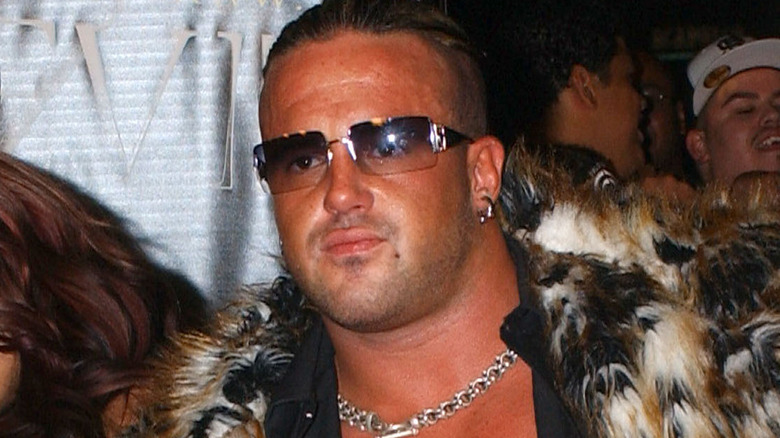 



Albert L. Ortega/Getty Images
Given the nature of the business, wrestlers are often in abnormal amounts of pain. They take bumps on a daily basis that, if taken wrong, could lead to a life spent in a wheelchair, a hospital bed, or even an early grave. To combat this, particularly in generations that have since passed us by, drugs and alcohol were the common remedies to help some of the guys and girls on the road every night get a decent night's rest.
Advertisement
In the mid-2000s, Joey Mercury had become one of WWE's most promising rising stars. He had won the WWE Tag Team Championships three times as part of MNM with Johnny Nitro, all while Melina was at ringside, he was featured on "WWE SmackDown" almost every week, and was living the life that many aspiring wrestlers around the world could only dream of. However, Mercury had a lot of demons that he had yet to beat. By the time he was 15, he had already become addicted to drugs, and when surrounded by people who pop painkillers like Tic Tacs in order to get through the day, it's no surprise that Mercury's life entered a downward spiral.
Mercury was released from WWE in 2007 after his addiction problems got out of hand, with Vince McMahon himself attempting an intervention to no avail. After bouncing around the independent scene, Mercury would begin to sober up, but his finances weren't in order and his house was in foreclosure and he was at risk of losing it altogether. However, CM Punk, one of Mercury's closest friends who stayed in contact with him during this dark time, ended up buying Mercury's house to help him keep his head above water. Mercury would return to WWE in 2010 and would end up working as producer until 2017.
Advertisement

The Dynamite Kid

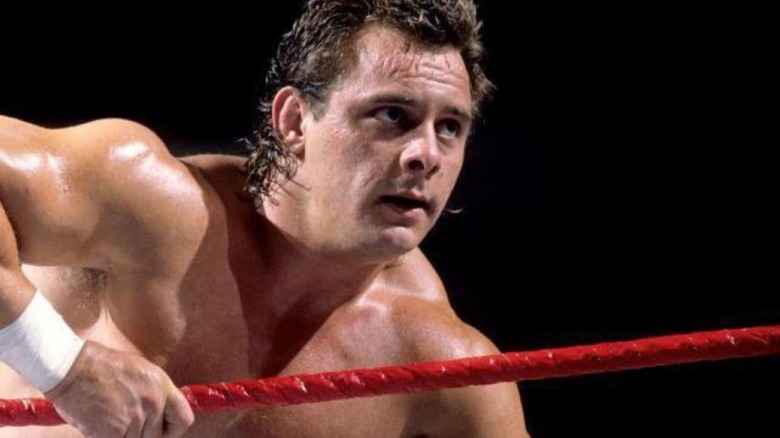 



WWE
The modern landscape of professional wrestling would look very different had The Dynamite Kid not existed. Known for being more explosive than a fireworks factory dangling over a volcano, Tom Billington brought together styles from England, Mexico, Canada, and Japan, to become one of the most influential performers of all time. If you've ever watched a match where someone delivers a snap suplex or a diving headbutt, The Dynamite Kid is partly responsible for those moves being as common as they are today.
Advertisement
Having said all that, Billington's no-nonsense style meant that he would be a wrestler that shone twice as bright for half as long, which unfortunately led to his body breaking down much earlier than the average wrestler who liked a good headlock every now and again. The Dynamite Kid would eventually retire from in-ring action in 1996, with the cause being years of working with untreated back and leg injuries that would lead to him having severe substance abuse issues throughout his career, and even played a part in him having a seizure at a Japanese airport the day after his retirement match.
In 1997, Billington lost the use of left leg, and from there, his financial situation got worse and worse. All of the money he had earned from wrestling around the world, as well as what was raised in a GoFundMe campaign, was sunk into paying for healthcare that would never fully work. He ended up confined to a wheelchair, paralyzed from the waist down, and on December 5, 2018, The Dynamite Kid died on his 60th birthday. The cause of death was officially ruled as a combination of all the major health issues he had accumulated since the final years of his in-ring career.
Advertisement

Scott Hall

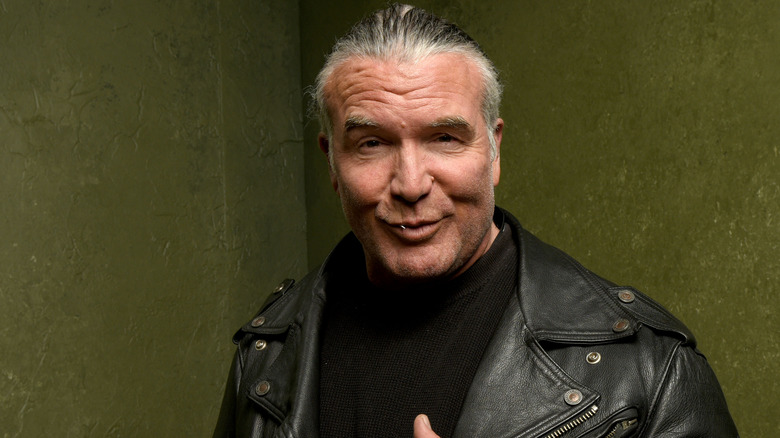 



Larry Busacca/Getty Images
We've already talked about how substance abuse issues can ruin a wrestler's career, and there is arguably no one in the business more well known for how tight their personal vices were than Scott Hall. While the former Razor Ramon never pinpointed any exact moment to where his issues began, before he had even gotten into the wrestling business, he had legitimately killed someone outside of a strip club he was bouncing at in 1983 and was charged with second-degree murder. Hall pleaded self-defence and the charges were later dropped due to a lack of evidence, but Hall's best friend Kevin Nash believes that had that shooting never happened, Hall would have been a completely different person.
Advertisement
Once he became a wrestler, Hall became known for having a fast and hard lifestyle that would make the most famous rockstars of all time blush. Complete with a healthy payslip in both WWE and WCW, Hall's issues became so bad that they were even used in storyline towards the end of his WCW run. Legal issues, being fired from multiple companies, and not being able to kick his habit meant that by 2013, the former Razor Ramon was on death's door with not a penny to his name.
Fortunately, wrestling's resident guardian angel Diamond Dallas Page decided to step in and help Hall get back on his feet in the same way he helped Jake Roberts turn his life around. DDP started a fundraising campaign to help Hall pay for his medical expenses, as well as paying for a hip replacement he desperately needed. The wrestling world came together to raise over $110,000 and by 2014, Hall was inducted into the WWE Hall of Fame looking the best he had in years; sadly, Hall died in March 2022 at the age of 63.
Advertisement

Perry Saturn

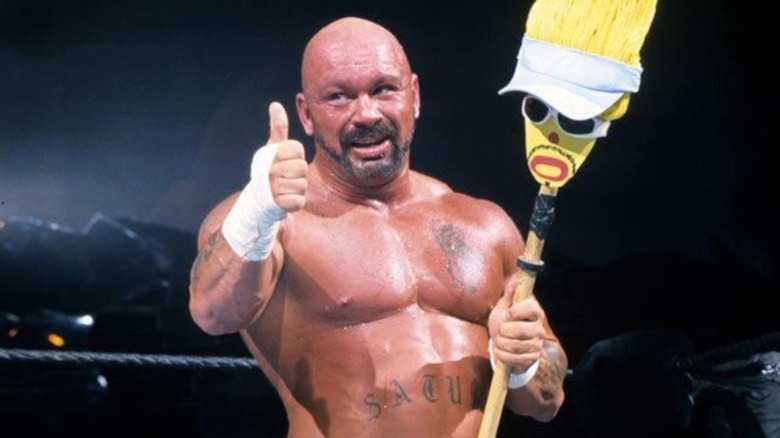 



WWE
Arguably one of the most underrated performers of wrestling's boom period during the late 1990s. Perry Saturn broke through into the public eye as part of The Eliminators in ECW, performing moves that no one his size or frame had any right to perform. This landed him a place in WCW by the end of 1997, and in 2000, he was one quarter of the famous Radicalz stable alongside Eddie Guerrero, Chris Benoit, and Dean Malenko who all walked out of WCW to join WWE. Saturn didn't have nearly as much success in WWE, often being remembered for his pairing Terri Runnels and later "Moppy," but it was after his WWE departure where things took a near fatal turn for Saturn.
Advertisement
In 2004, Saturn risked his own life to save someone else's. While he was walking his girlfriend to work, he noticed two men attempting to rape a woman in an alley. Saturn managed to fend off the assailants, but in the process, he was shot in the back of the neck and the right shoulder, shots that Saturn at the time thought were just stiff punches until he started bleeding. Saturn survived, but was left with a life of pain, and like many others, turned to drugs to ease any discomfort he had.
Saturn admitted that he became addicted methamphetamine, and was even homeless for nearly two years as his addiction had taken over his finances. He did eventually get clean, but fell back into old habits and lost his apartment, resulting in him back on the streets. In the time since, Saturn revealed that he has been dealing with a traumatic brain injury that left him unable to find work.
Advertisement

Ric Flair

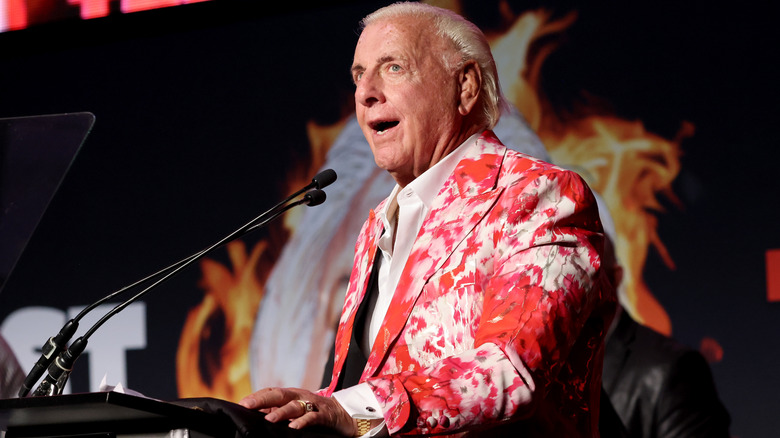 



Jason Kempin/Getty Images
The irony of including a man who claims to be a limousine riding, jet flying, rolex wearing, kiss stealing, son of a gun is certainly not lost, but for as wealthy as Ric Flair was during his prime, his finances have been all over the place since the turn of the millennium.
Advertisement
Flair famously "retired" from wrestling after losing to Shawn Michaels at WrestleMania 24 in one of the most emotional moments in WWE history. The sight of Flair saying goodbye to wrestling after such a storied career should have been the perfect final chapter to a legendary career, but outside of the ring, Flair was not in a good place. In 2007, he had opened financial business called "Flair Finance," and one year later, Flair Finance had filed for bankruptcy. WWE hadn't kept Flair around on any sort of legends deal and his money was running out fast, which led to him briefly signing with Ring of Honor in 2009, who later sued Flair for no-showing events in a lawsuit that was never fully resolved.
Advertisement
After a tour of Australia with Hulk Hogan, The 'Nature Boy' would officially come out of retirement in 2010 when he signed with TNA Wrestling, a time in Flair's career that the man himself isn't particularly proud of, and was only there to collect a paycheck every month. Flair admitted that the money he was earning from TNA was used to pay alimony to three different women, and get himself out of hot water with the IRS who came down on him like a ton of bricks after he left WWE. These days, Flair is still trying to make money in any way imaginable, whether it's through his "Wooooo!" energy drink, his "Wooooo!" chicken wings, or his own cannabis line called "Ric Flair Drip."

Batista

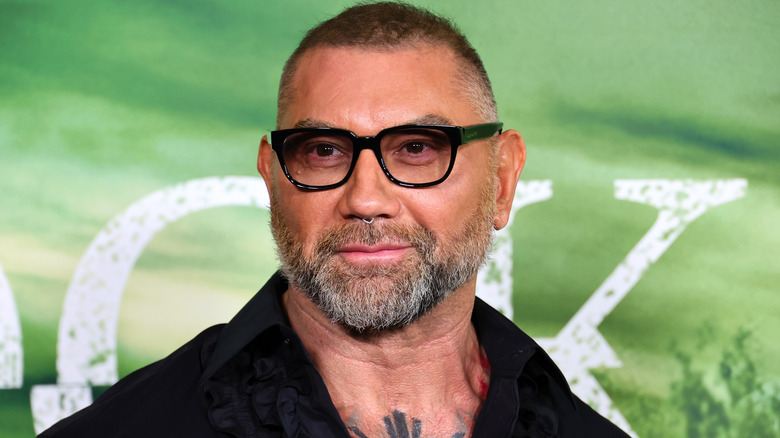 



Theo Wargo/Getty Images
Dave Bautista is best known these days for not only being an actor, but arguably the best professional wrestler to ever fully transition into a full-time movie star. He played a major role in the "Guardians of the Galaxy," movies which led to him being part of both "Avengers: Infinity War" and "Avengers: Endgame," two of the most financial successful films in the history of cinema. However, in order to get to lofty heights of Hollywood, the former WWE Superstar had to lose everything to get there.
Advertisement
Bautista famously left WWE in 2010 in both kayfabe and shoot, coming out on an episode of "WWE Raw" in a wheelchair to tell the world he quit the company, when in reality, he was legitimately leaving as he didn't like the direction the company was going in. With no wrestling to worry about, "The Animal" pursued acting full-time, but aside from small niche movies that even the most hardcore movie lover wouldn't have seen, Bautista was broke as he had been living off the money he earned in WWE for three years straight, with no new money coming in.
The Animal didn't want to return to WWE with his tail between his legs, and fortunately for him, he was cast in the first "Guardians of the Galaxy" movie in 2013, which he claims saved his life and stopped him from being homeless as his house was in foreclosure. Once filming wrapped on the first "Guardians" movie, Bautista made his return to WWE in 2014, where he won that year's Royal Rumble and main evented WrestleMania; he has since called time on his in-ring career, officially retiring in 2019 as his acting career had become his main priority. Despite this, Bautista still loves the business that gave him his first big break.
Advertisement


 1 month ago
13
1 month ago
13 

